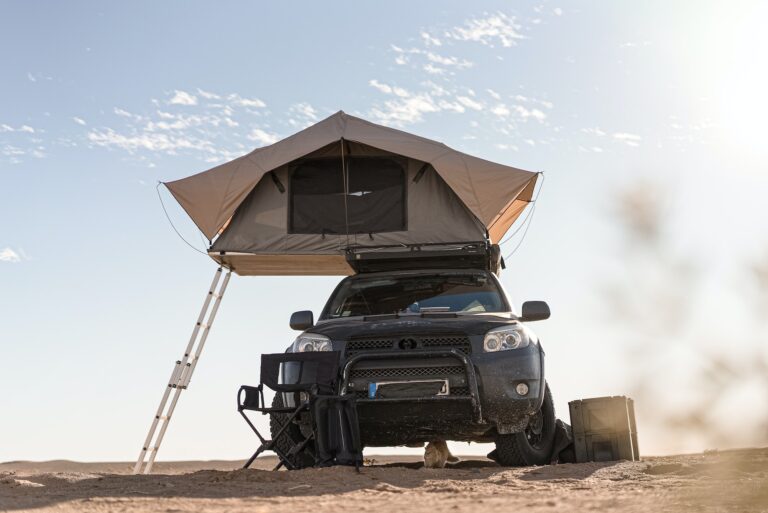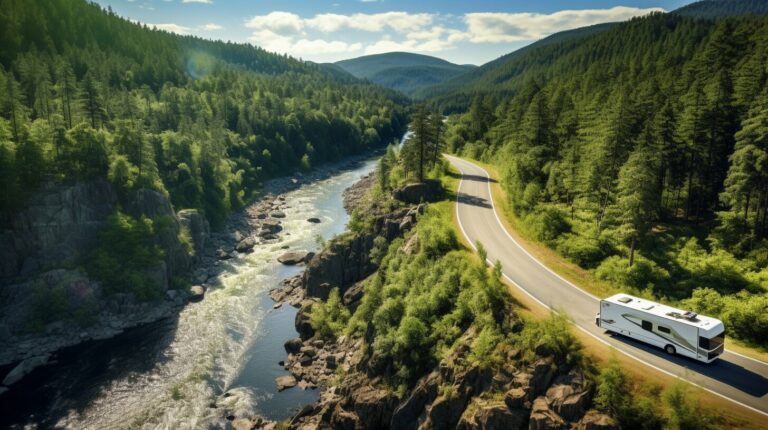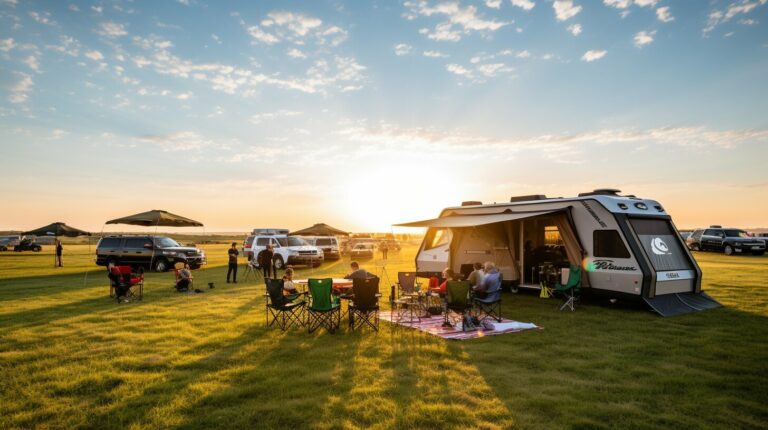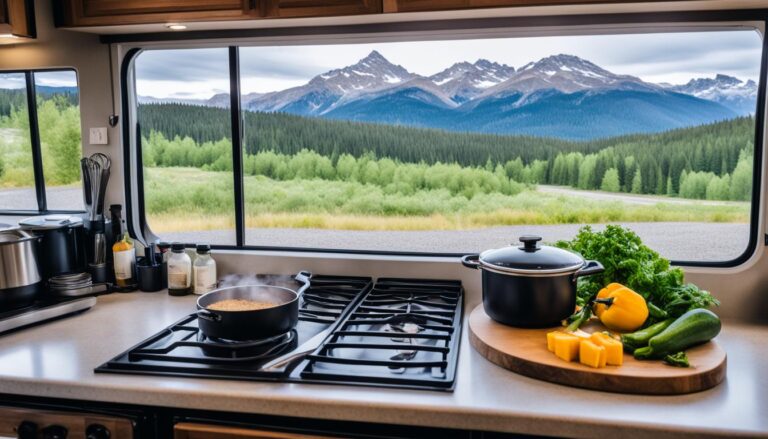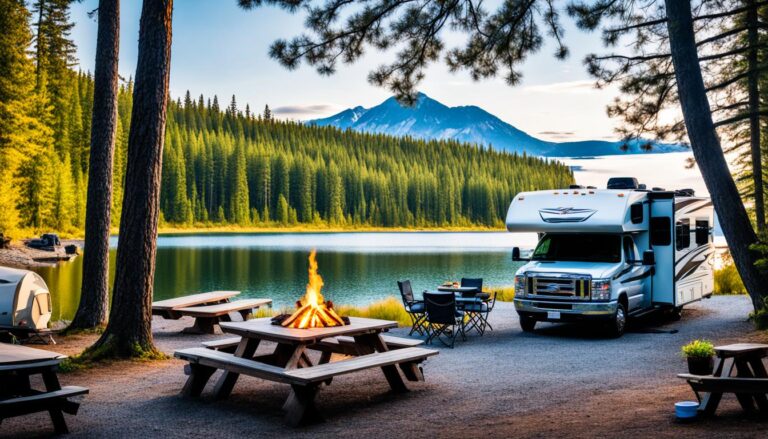Traveling in an RV gives you the freedom to explore the open road, but it also requires a basic understanding of your vehicle’s systems. One of the most important is the water system, which comprises the fresh, gray, and black water tanks. This guide will provide a comprehensive overview of these tanks, their maintenance, and common problems you may encounter.
What are RV Water Tanks?
RV water tanks are crucial components of your mobile home’s plumbing system. They store and manage different types of water used and produced in your RV.
1. Fresh Water Tank
The fresh water tank stores the clean water used for drinking, cooking, and bathing. Depending on the size of your RV, the capacity of this tank can vary from 20 to 100 gallons.
2. Gray Water Tank
The gray water tank holds the wastewater that comes from your shower and sinks (excluding the kitchen sink in some models). This water has soap residue, food particles, and similar debris but is not as contaminated as black water.
3. Black Water Tank
The black water tank collects the most contaminated water from your RV: the waste and wastewater from your toilet. This tank needs to be handled with the most care due to potential health risks.
How Do RV Water Tanks Work?
Understanding how these tanks work will help you manage them better.
4. Fresh Water System
You can fill your fresh water tank through a dedicated inlet, usually located on the exterior of your RV. When you turn on a faucet or shower, the water pump draws water from this tank and supplies it to the system.
5. Gray and Black Water Systems
When you use your shower, sink, or toilet, the wastewater flows into the gray or black water tank respectively. Each tank has a separate outlet for emptying its contents at designated dumping stations.
Maintaining Your RV Water Tanks
Routine maintenance of your RV water tanks is essential to keep them functioning properly and to avoid potential health hazards.
6. Fresh Water Tank
- Sanitizing: Sanitize your fresh water tank regularly, especially at the start of the camping season, to kill bacteria or algae. You can do this using a solution of bleach and water. Rinse the tank thoroughly after sanitizing.
- Flushing: Regularly flush your fresh water tank to remove any sediment or debris.
- Filling: Always fill your fresh water tank with potable water from a trusted source.
7. Gray Water Tank
- Draining: Drain your gray water tank regularly to avoid overflows and odors. However, always keep a little water in the tank to prevent waste from sticking to the bottom.
- Cleaning: Clean your gray water tank periodically to remove build-up. Special tank cleaning products are available for this purpose.
8. Black Water Tank
- Draining: Like the gray tank, the black tank should also be drained regularly. However, you should only drain it when it’s at least two-thirds full to ensure solid waste is properly flushed out.
- Cleaning: Use a tank cleaning wand to clean the inside of the black tank through the toilet. Special black tank cleaning chemicals can also help break down waste and control odors.
- Using RV Toilet Paper: Use RV-specific toilet paper that’s designed to break down quickly and prevent clogs.
Emptying Your RV Water Tanks
Properly emptying your RV tanks is crucial to avoid messes and keep your system working correctly.
9. Drain Black Tank First
Always drain your black tank first. This allows the subsequently drained gray water to rinse out the sewer hose.
10. Use a Quality Sewer Hose
A quality sewer hose reduces the likelihood of leaks and spills. Make sure it’s properly connected to your RV and the dump station inlet.
11. Use Gloves
Always wear disposable gloves for protection when handling sewer hoses and manipulating tank valves.
12. Rinse Tanks and Sewer Hose
After draining, rinse your tanks and sewer hose thoroughly. Some RVs come with built-in tank rinse systems, or you can use a separate tank rinse wand or hose.
Common RV Water Tank Issues and Solutions
Even with proper maintenance, you may encounter issues with your RV water tanks. Here’s how to handle some common problems:
13. Leaks
Leaks can occur around the tanks or at the fittings. If you notice a leak, have it repaired as soon as possible to prevent water damage.
14. Sensor Errors
Tank sensors can give incorrect readings due to debris build-up. Regular cleaning often solves this issue. If not, the sensors may need replacement.
15. Odors
Odors can arise from the gray and black water tanks. Regular cleaning, proper ventilation, and the use of tank deodorizers can help manage odors.
16. Clogs
Clogs can occur in any of the tanks, but are most common in the black water tank. Avoid putting anything other than RV toilet paper and human waste in the toilet to prevent clogs. If a clog does occur, you can use a tank cleaning wand or a special unclogging chemical to resolve the issue.
In conclusion, successfully managing your RV water systems requires understanding how the fresh, gray, and black water tanks function, as well as how to maintain and troubleshoot them. By following the above guidelines, you can ensure a smooth and enjoyable RV campingexperience. Happy travels!

